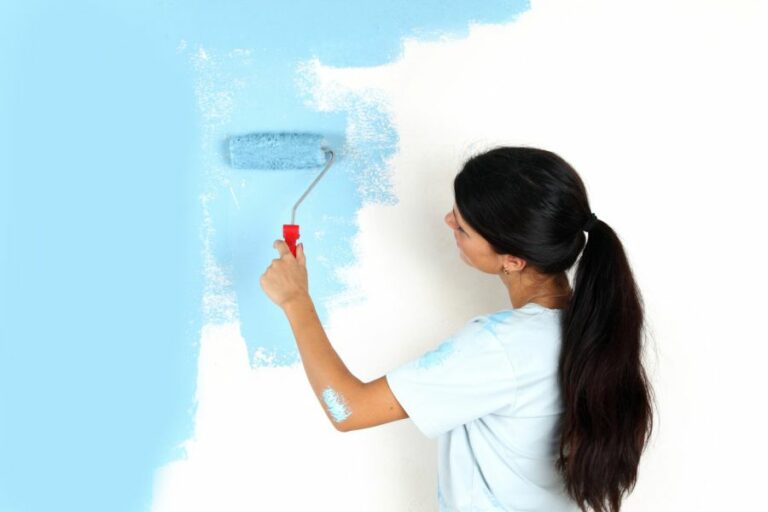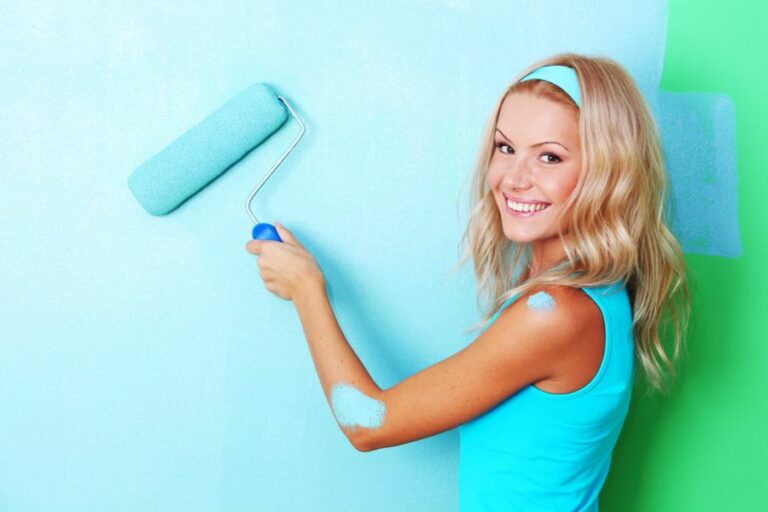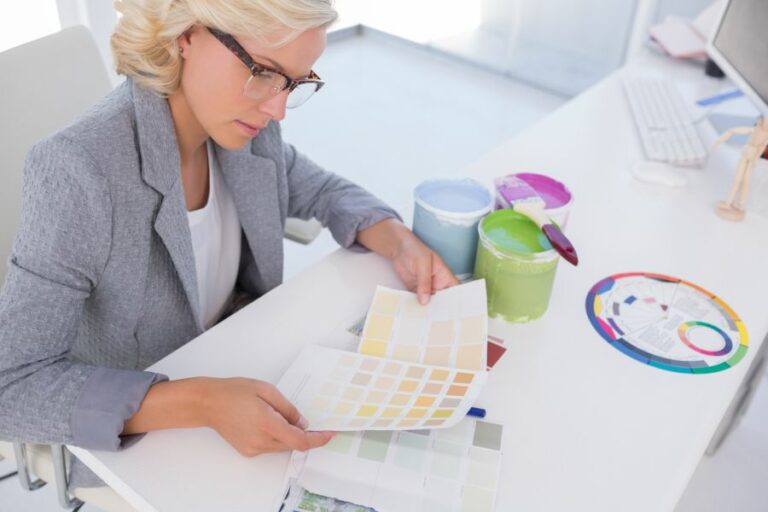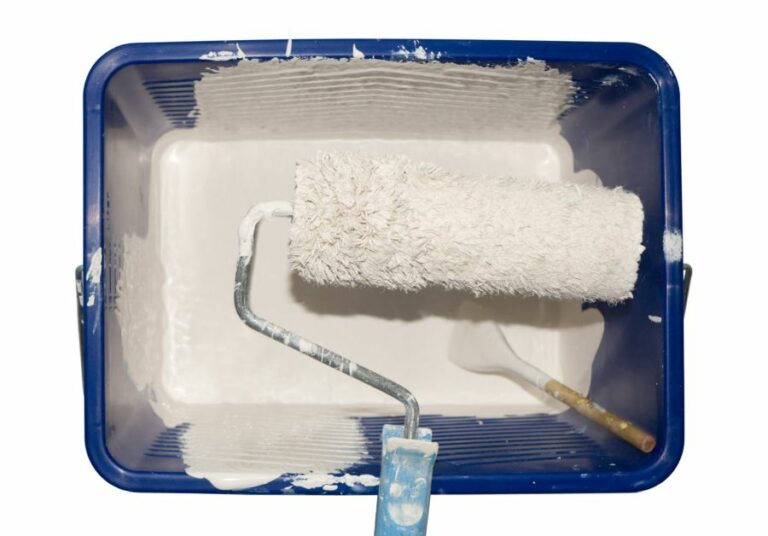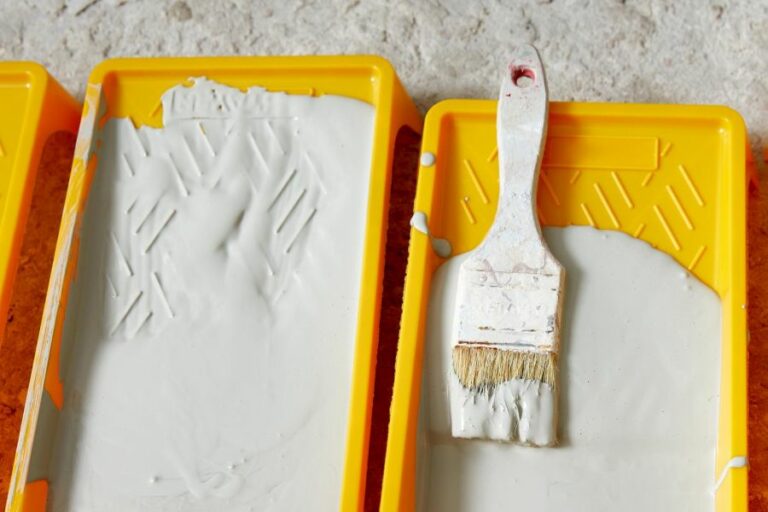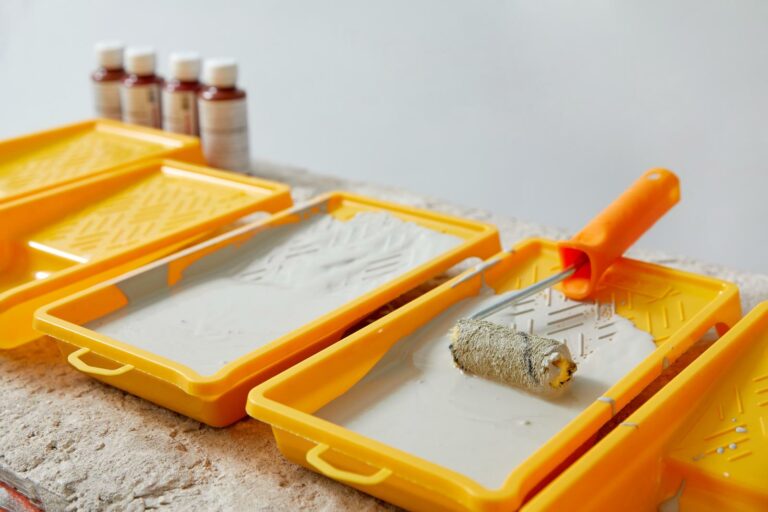Textured Wall Coatings For Indoors – Technical. What Pros Say
Textured wall coatings have become increasingly popular in recent years, providing not only an aesthetically pleasing finish but also a practical solution for various indoor applications. As a professional in the field, I understand the technical aspects of these coatings and am here to guide you through the process of selecting and applying the perfect textured coating for your project.
Textured wall coatings for indoors – technical:
Textured wall coatings, also known as decorative coatings, are versatile interior design elements that offer unique design possibilities, durability, and easy maintenance. They come in various types, including Venetian plaster, stucco, knockdown, and orange peel textures, and can be applied using techniques such as trowel application and spray application. These coatings are popular choices for homeowners, designers, and architects to create stylish and durable interior spaces.

Discover the world of textured wall coatings for indoors and uncover the technical aspects behind these innovative finishes. Learn about the various application techniques, benefits, maintenance, and more. Keep reading to transform your interior spaces with a new level of sophistication and style.
Contents
- 1 Interior Textured Wall Coatings: Technical Overview
- 2 Optimal Methods for Creating Textured Walls
- 3 Top Interior Wall Coatings for Enhanced Style
- 3.1 • A Brief Overview of Coating Types
- 3.2 • Considerations When Choosing a Coating
- 3.3 • Recommended Coatings
- 3.4 • Final Thoughts
- 3.5 • Texturing Interior Walls: A Comprehensive Guide
- 4 Using Textured Paint for Indoor Applications
Interior Textured Wall Coatings: Technical Overview
• Introduction to Textured Wall Coatings
Textured wall coatings, also known as decorative coatings, are popular choices for interior design because they provide an adaptable yet stylish appearance that suits a wide range of environments.
These wall treatments can be customized to fit specific design preferences and color palettes, making them an ideal option for homeowners, designers, and architects looking to make a statement through the use of texture on walls.
• Benefits of Textured Wall Coatings
There are several advantages to using textured wall coatings. Some of these benefits include:
- Unique design possibilities: Textured wall coatings allow you to create a wide array of design options, from subtle textures to more pronounced, multidimensional surfaces.
- Durability: Many textured wall coatings are made from high-quality materials, making them exceptionally durable and long-lasting.
- Easy maintenance: Textured coatings are typically low maintenance, as they can be easily cleaned with a damp cloth, making them practical for families and homes with pets.
- Customizable: With a broad range of colors, finishes, and application techniques, textured wall coatings can be tailored to fit your specific design vision.
• Types of Textured Wall Coatings
There are several types of textured wall coatings available, each offering its unique design possibilities. Some of the most common types include:
– Venetian Plaster
Venetian plaster, also called polished plaster or Italian plaster, is a lime-based wall finish that creates a smooth, high-gloss appearance.
It can be applied using various techniques, resulting in a diverse range of textures and patterns. Venetian plaster is perfect for homeowners and designers looking for a luxurious, polished look.
– Stucco
Stucco is a cement-based wall finish that creates a textured, rustic appearance. It offers a high level of durability and is perfect for individuals looking for a natural-looking finish. Stucco can be applied in a variety of textures and colors, offering endless design possibilities.
– Knockdown Texture
Knockdown texture is a popular wall treatment that creates a subtle, textured appearance. This coating is applied using a trowel or spray gun, and the texture is formed by knocking down the peaks of the wet material. Knockdown texture offers a simple yet stylish look, making it suitable for any interior space.
– Orange Peel Texture
Orange peel texture, also called sprayed texture, is a wall coating that creates a slightly bumpy surface resembling the texture of an orange peel. This texture is applied using a spray gun, which provides a consistent, even texture that is both attractive and easy to maintain.
• Application Techniques for Textured Wall Coatings
Achieving the desired texture on your walls involves the use of specific application techniques. Some common methods include:
– Trowel Application
Using a trowel, the textured material is applied to the wall in a thin, even layer. Multiple layers can be added to achieve the desired level of texture and depth. This technique is commonly used with Venetian plaster, stucco, and other trowel-applied coatings.
– Spray Application
Using a spray gun or hopper, the textured material is applied to the wall in a consistent, even pattern. This technique can be used with orange peel texture and knockdown texture, as well as other spray-applied coatings.
– Combining Techniques
In some cases, a combination of application techniques can be used to create unique, customized textures. For example, a trowel may be used to apply the initial layers of a textured coating, with subsequent layers applied using a spray gun.
This approach allows for the creation of highly personalized and distinctive wall textures.
• Choosing the Right Textured Wall Coating for Your Space
When selecting a textured wall coating, it is essential to consider the style, durability, and maintenance requirements of the finish. Additionally, specific concerns, such as the room’s purpose and the level of traffic, should also be taken into account.
For high-traffic areas, a durable coating, such as stucco or Venetian plaster, may be the best choice. In contrast, for a more minimalist design, a subtle texture like knockdown or orange peel may be more appropriate.
Ultimately, the choice of texture and application technique will depend on your desired look and your specific design preferences.
• Textured Wall Coating Maintenance and Care
To maintain the appearance and longevity of your textured wall coating, regular cleaning is necessary. Use a soft, damp cloth to gently remove any dirt or debris from the surface. For more stubborn stains or marks, a mild soap and water solution can be used.
It is essential to follow the manufacturer’s recommendations for cleaning and maintenance to ensure the continued beauty of your textured walls.
In conclusion, textured wall coatings offer an extensive range of design possibilities, making them a popular choice for homeowners, designers, and architects.
With a variety of textures, colors, and application techniques available, the possibilities are endless for creating a unique, stylish, and durable interior space.
Optimal Methods for Creating Textured Walls
Textured walls are a popular choice for homeowners and designers, providing visual interest and character to a room. There are numerous techniques to achieve a textured wall, but choosing the best one depends on the desired look and personal preference.
• Drywall Mud Technique
Drywall mud, also known as joint compound, is a versatile material that can be used to create various wall textures. This technique is cost-effective and easy to do, making it a popular choice among DIY enthusiasts.
– Pros
- Affordable
- Easy to apply
- Can create various textures
– Cons
- May require more preparation if the wall is not smooth
- Can be messy to work with
– Steps to Achieve the Look
- Prepare the wall: Clean the wall and fix any imperfections, such as holes or cracks. You may need to apply a primer if the wall is not smooth.
- Choose the texture: Select the texture you want to achieve, such as a swirl, knockdown, or skip trowel. You can find inspiration here.
- Apply the drywall mud: Using a trowel or other suitable tool, apply the joint compound to the wall. Experiment with different strokes and angles to achieve the desired texture.
- Let it dry: Allow the mud to dry for at least 24 hours before painting or applying any finishing touches.
• Venetian Plaster Technique
Venetian plaster is a luxurious wall finish originating from Italy, known for its rich texture and high-quality appearance. This technique requires specialized materials and expertise, making it a more expensive option.
– Pros
- Luxurious appearance
- Durable and long-lasting
- Smooth to the touch
– Cons
- Requires skilled labor and specialized materials
- Expensive
– Steps to Achieve the Look
- Prepare the wall: Ensure the wall is clean, free of imperfections, and primed if necessary.
- Apply the base coat: Use a trowel to apply a thin layer of Venetian plaster to the wall, making sure it’s evenly distributed.
- Build up layers: Once the base coat is dry, apply additional layers of plaster while varying the angle and trowel pressure. This creates depth and texture.
- Burnish and polish: Using a smooth trowel, burnish the final layer of plaster to achieve a polished finish.
- Seal and protect – Apply a protective wax or sealant to ensure the durability of the finish.
• Faux Painting Technique
Faux painting is another method to achieve textured walls, which involves using paint and glazes to create the illusion of texture. This technique allows for a variety of finishes, such as marble, wood, or stone effects.
– Pros
- Wide range of finishes and textures
- Less expensive than some other options
– Cons
- Can be time-consuming
- May require artistic skills
– Steps to Achieve the Look
- Prepare the wall: Clean and prime the wall if necessary.
- Choose the faux finish: Decide on the desired faux finish, such as a sponging or ragging effect.
- Apply the base paint: Apply a base coat in the desired color, allowing it to dry completely.
- Apply the glaze: Mix a glaze with the desired color and apply it using the chosen technique (sponging, ragging, etc.).
- Finish and protect: After the glaze is dry, apply a protective sealant if desired.
• Wallpaper Technique
Textured wallpaper is a convenient option for those who want a textured wall without the mess or hassle of other methods. There are numerous textured wallpaper options available, from embossed designs to paintable options.
– Pros
- Easy to apply and remove
- Wide variety of designs
- Can be a temporary solution
– Cons
- May not be suitable for all wall surfaces
- Can be challenging to match seams perfectly
– Steps to Achieve the Look
- Prepare the wall: Clean the wall and remove any existing wallpaper. Prime the wall if necessary.
- Choose the wallpaper: Select the desired textured wallpaper design and calculate how much is needed.
- Apply the wallpaper: Follow the manufacturer’s instructions for applying the wallpaper, ensuring seams are lined up, and edges are smoothed.
- Trim excess: Carefully trim any excess wallpaper using a sharp utility knife.
• Final Thoughts
The best technique for textured walls depends on your desired look, budget, and skill level. Experimenting with different techniques may help you find the perfect option for your space. Remember to prepare the wall properly and take your time to achieve the best results. Happy texturing!
Technique | Description | Best Use |
|---|---|---|
1. Stipple Brush | A stipple brush is used to create a stippled texture on the wall by dabbing paint or joint compound onto the surface. | For creating a subtle, uniform texture on walls. |
2. Comb | A notched trowel or a comb can be used to create lines and grooves in the compound, creating a unique texture. | For creating a custom pattern or design on walls. |
3. Knockdown | A knockdown texture is created by applying compound to the wall and using a knockdown knife or trowel to lightly flatten the peaks and create a smooth, consistent texture. | For adding depth and dimension to walls without making them look too busy. |
4. Orange Peel | The orange peel texture is created by spraying thinned joint compound onto the wall, then letting it dry to create a bumpy, slightly rough texture. | For creating a casual, inviting look in living spaces. |
5. Popcorn | Popcorn texture is created by mixing joint compound with a textured additive, then spraying it onto the wall or ceiling using a hopper gun. The texture can be left rough or lightly knocked down with a trowel. | For covering up imperfections on ceilings and reducing noise in a room. |
Top Interior Wall Coatings for Enhanced Style
• A Brief Overview of Coating Types
There are several types of coatings available for interior walls, ranging from traditional paints to advanced material technologies. Each type of coating offers unique benefits and drawbacks.
Understanding their features and properties is essential to making the right choice for your specific needs.
– Emulsion Paints
The most common type of wall coating, emulsion paints, are water-based and come in various finishes, such as matte, satin, and eggshell. They are easy to apply, dry relatively quickly, and emit low levels of volatile organic compounds (VOCs).
– Distemper Paints
This age-old water-based paint is made from glue or resin mixed with chalk, lime, or similar materials. It is low-cost, easy to apply, and has good adhesion properties. Distemper paints, however, are not very durable and often require multiple coats.
– Oil-Based Paints
Also known as alkyd paints, oil-based paints provide a durable, hard-wearing finish. They often have a long life span, but they can take longer to dry and may emit higher levels of VOCs.
– Wallpaper
As an alternative to paint, wallpaper is a popular choice for interior walls. Available in a vast range of patterns and colors, it can create an immediate visual impact. Some wallpapers also offer additional benefits, such as noise reduction and insulation.
– Specialty Coatings
Several advanced coatings offer unique properties, such as anti-microbial, anti-fungal, or odor-neutralizing features. Many of these coatings are designed to address specific needs or issues, and selecting the right one depends on individual requirements.
• Considerations When Choosing a Coating
When selecting the best coating for your interior walls, it’s crucial to take several factors into account. These include the intended use of the space, the desired finish, your budget, and any special requirements (e.g., allergen reduction or mold resistance).
– Durability and Maintenance
How often the space is used, the likelihood of wear and tear, and how easy it is to clean walls should inform your choice of coating. High-traffic areas like kitchens, bathrooms, and hallways may require more durable and water-resistant coatings than bedrooms or living rooms.
– Aesthetics
The desired look and finish are critical considerations, as they can impact the atmosphere and overall appeal of a space. For instance, matte finishes offer a sophisticated and subtle look, while glossy coatings reflect light and may make a room appear more spacious.
– Overall Cost
Factor in the overall cost of the project, including labor and materials. While some coatings may be cheaper upfront, they may not offer the same durability, necessitating more frequent touch-ups or replacements in the long run.
– Health and Environment Concerns
Consider using low-VOC paints and coatings to minimize the risk of indoor air pollution and promote a healthier living environment. The Environmental Protection Agency offers additional guidance on the matter.
• Recommended Coatings
Based on the above factors, we recommend the following coatings for different situations:
- For a budget-friendly option with good performance and relatively low VOC emissions, opt for water-based emulsion paints.
- In the case of high-traffic areas or where additional durability is necessary, oil-based paints or specialty coatings may be justified, provided that the potential health and environmental concerns are taken into consideration.
- Consider wallpaper as an eye-catching alternative to paint, but bear in mind that it may be more challenging and time-consuming to install and maintain.
- For rooms requiring extra protection, like kitchens and bathrooms, look for coatings with added mold-resistant or anti-microbial properties.
• Final Thoughts
Ultimately, there is no one-size-fits-all answer to the question of the best coating for interior walls. Consider the space’s specific needs and preferences to make the right choice. With careful thought and planning, it’s possible to find a coating that’s both aesthetically pleasing and functional.
Type of coating | Features | Pros | Cons |
|---|---|---|---|
Latex paint | Water-based, fast-drying, and breathable | Easy to clean, flexible, and good adhesion | Less durable than oil-based paints |
Oil-based paint | Superior durability and coverage, excellent leveling | Long-lasting finish, resistant to wear and tear | Slow-drying, requires paint thinner for cleanup |
Matte paint | Non-reflective finish, good for hiding wall imperfections | Easy touch-ups, suitable for low-traffic areas | Can be less washable, less durable |
Eggshell paint | Low-luster finish, ideal for living rooms and bedrooms | Easy to clean, resilient, and good coverage | Not as smooth as satin and may reveal wall imperfections |
Satin paint | Silky finish, best for doors, trim, and high-traffic areas | Durable, easy to clean, and good stain resistance | Can show brush strokes, difficult touch-ups |
Semi-gloss paint | Highly reflective finish, suitable for bathrooms and kitchens | Moisture-resistant, easy to clean, and durable | Can highlight wall imperfections, difficult touch-ups |
• Texturing Interior Walls: A Comprehensive Guide
When it comes to interior design, texturing your walls can make a significant impact on the overall ambiance and aesthetic of a space. There are several options available for texturing interior walls, ranging from subtle and understated to bold and dramatic.
– Traditional Drywall Texture: Skip Trowel and Orange Peel
Skip trowel and orange peel textures are two of the most common techniques used for texturing drywall. Both techniques utilize a specialized trowel or sprayer to apply joint compounds to the surface of the wall in a specific pattern.
Skip Trowel
A skip trowel texture is achieved by applying a thin layer of joint compound with a curved trowel in a skipping motion, creating a textured surface with random patterns.
This technique can add subtle depth and character to walls without overwhelming the space. It is recommended for rooms where you want a textured look without going too bold.
Orange Peel
As its name implies, the orange peel texture has a bumpy, slightly dimpled surface resembling the skin of an orange. This texture is applied using a texture paint sprayer or a roller, followed by light sanding to achieve the desired effect.
Orange peel texture is popular for its subtle yet noticeable texture and works well in a variety of interior settings like living rooms and kitchens.
– Bold Drywall Texture: Knockdown and Venetian Plaster
For those wanting a more dramatic effect on their interior walls, consider using knockdown or Venetian plaster techniques to create a bold, visually striking texture.
Knockdown
A knockdown texture is created by applying joint compound to the wall in a random pattern, followed by “knocking down” the raised peaks with a taping knife, creating a flattened and uniquely textured surface.
Knockdown texture is an excellent option for adding visual interest and depth to walls and is often used to help mask imperfections.
Venetian Plaster
Venetian plaster is an elegant and luxurious texturing technique with roots in ancient Italian architecture. It is achieved by applying multiple thin layers of plaster, followed by a burnishing process to create a smooth, lustrous finish with the appearance of depth and movement.
Although this technique can be more labor-intensive and costly than other texturing methods, the results are truly stunning and can elevate any interior space.
– Environmentally Friendly Option: Clay Plasters
For those interested in a more eco-friendly option, clay plasters provide a natural and sustainable alternative to traditional texturing materials.
Made from blends of clay, sand, and natural pigments, clay plasters can create a variety of textures and finishes without the need for synthetic additives or harmful chemicals.
Clay plasters are suitable for both smooth and textured finishes and come in a range of colors, allowing for endless customization and personalization. Natural Building Technologies provides additional information on the benefits and usage of clay plasters.
– Combining Textures for a Unique Look
Multiple texture techniques can be combined to create a truly one-of-a-kind interior wall finish, such as incorporating both skip trowel and Venetian plaster to achieve a layered, multidimensional effect.
Experimenting with various methods and materials can lead to impressive and unique results that speak to your individual style and taste.
Remember, texturing can be an art in itself, and there is no wrong way to approach it as long as it yields the desired outcome. Don’t be afraid to let your creativity and imagination guide you in your quest for the perfect wall texture.
In conclusion, the options for texturing interior walls are vast and varied. From traditional drywall techniques like skip trowel and orange peel to more dramatic finishes like knockdown and Venetian plaster, the possibilities are nearly endless.
Consider factors such as the desired aesthetic, budget, and level of commitment when selecting the texturing method that is right for you. By experimenting with different styles and combinations, you can achieve a unique and personalized look that truly stands out.
Texture Material | Description |
|---|---|
Joint compound | A versatile substance that can be used to create a variety of textures, including orange peel, knockdown, and skip trowel. |
Textured paint | A thick paint that contains particles for creating textures such as sand, popcorn, or faux finishes. |
Venetian plaster | A smooth and glossy plaster finish that can create a marble-like appearance on walls. |
Stucco | A mixture of cement, sand, and other materials used to create a variety of patterns and textures on walls. |
Wood paneling | Thin sheets of wood or simulated wood material that can be applied to walls for a textured and natural appearance. |
Fabric wallcovering | Textile materials, such as silk or grasscloth, can be applied to walls for a unique and textured look. |
Using Textured Paint for Indoor Applications
• Introduction to Textured Paint
Textured paint is a popular option to add character, depth, and dimension to the walls and ceilings of various rooms. Available in a wide range of textures, including sand, popcorn, and stucco-like finishes, textured paint is an excellent choice to create visual interest and hide minor imperfections on surfaces.
However, many people have concerns about using textured paint indoors. These worries stem from concerns about maintenance, aesthetic appeal, and indoor air quality.
• Benefits of Using Textured Paint Indoors
– Aesthetic Appeal
One of the primary reasons homeowners choose textured paint is the unique look and feel it provides. It adds visual depth and character to walls, ceilings, and even furniture. This added dimension can transform a bland room into one with distinct visual appeal.
– Hiding Imperfections
Textured paint works exceptionally well at hiding minor wall imperfections, such as cracks, stains, and uneven surfaces. The texture masks these blemishes and can save homeowners from the time and expense of extensive surface repairs.
– Acoustic Benefits
Some textured paint types (e.g., popcorn texture) offer acoustic benefits by reducing the echo and sound transmission between rooms. This feature makes it a great option for spaces with high ceilings or shared living arrangements.
• Drawbacks of Using Textured Paint Indoors
– Difficult Application
Applying textured paint requires patience and skill, as it can be challenging to achieve a consistent appearance across a large surface area. While some DIY enthusiasts may tackle this project, many novices may struggle and require professional assistance.
– Cleaning and Maintenance
Textured walls and ceilings can collect dust and dirt more quickly than smooth surfaces, making them more challenging to clean. Additionally, matching the texture for touch-ups or repairs can be difficult, especially when working with more intricate finishes.
– Indoor Air Quality Concerns
While modern textured paints are typically low-VOC (volatile organic compounds), some older formulations may contain asbestos or other harmful substances.
When dealing with a pre-1978 textured surface, be sure to test for lead paint and other potential hazards before attempting any removal or renovation. The U.S. Environmental Protection Agency provides guidance on testing and dealing with lead paint.
• Choosing the Right Textured Paint for Your Home
When selecting a textured paint for indoor use, consider the following factors:
– Room Usage
Think about the specific room and its purpose. For example, due to its cleaning and maintenance requirements, textured paint may not be the best option for a high-traffic area, such as a hallway or kitchen.
Conversely, it may be suitable for a living room, bedroom, or home theater, where its unique aesthetic and acoustic benefits can be appreciated.
– Climate and Humidity
Certain textured paint types may not be suitable for high-moisture environments like bathrooms, as they can accumulate mold and mildew. In such atmospheres, consider using moisture-resistant paint or alternative wall treatments specifically designed for humid conditions.
– Application Expertise
As mentioned earlier, applying textured paint can be a complex process. Therefore, consider your skill level and the level of detail required in the desired texture before embarking on this project. If in doubt, consulting with a professional painter or contractor may be advisable.
• Final Thoughts
In conclusion, you can indeed use textured paint indoors, provided you consider the benefits and drawbacks before selecting the appropriate product and application for your specific situation.
By doing a thorough research and understanding the unique challenges of working with textured paint, homeowners can embrace this versatile finish to create inviting, visually appealing spaces within their homes.

